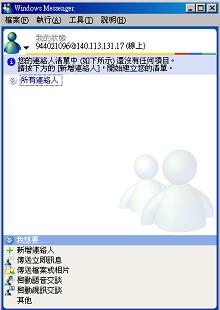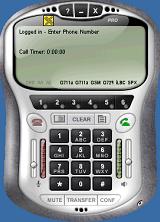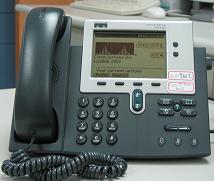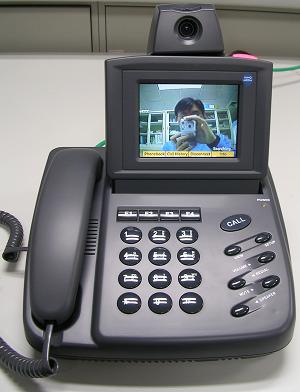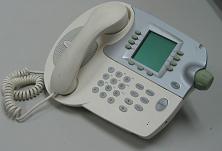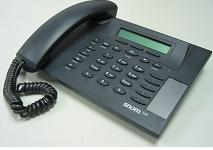VoIP Test Base Unit: Framework And Protocol
Figure 1 is the architecture of VoIP Test Base Unit. Each
component of VoIP system interacts to others by SIP protocol.
The following is the description about these components.

Figure 1: VoIP Test Base Unit
SIP Proxy Server (Figure 1(a)) provides the basic communication connection control in VoIP Test Base Unit, and processes the request and response of SIP as SIP Proxy Server.
Furthermore, it was used as Registrar Server for saving user contact information. Presently, We have a SIP Proxy Server executing on Windows 2000 industry computer, and another SIP Express Router on FreeBSD and Linux.
Figure 2 is OAM (operation, administration & maintenance) system of SIP Proxy Server. The figure shows the SIP administrative page of SIP Proxy Server.
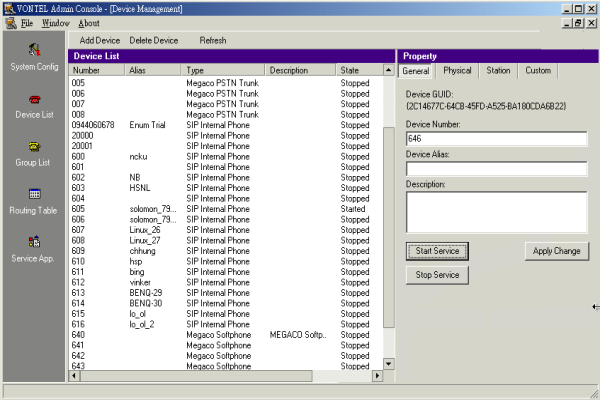
Figure 2: OAM system of SIP Proxy Server.
PSTN (Public Switch Telephone Network) Gateway
(Figure 1(b)) supports the operation between VoIP Test Base Unit and PSTN,
and it allows users of IP phone contacts to other users of PSTN directly or
indirectly by PBX (Figure 1(c)).
PSTN Gateway deployed on VoIP Test Base Unit now is Cisco
2621xm.
Figure 3: Cisco 2621XM PSTN (Public Switch Telephone Network) Gateway
SIP VoIP is
a SIP phone client (Figure 1(d)) executed by hardware or software, and
provides the basic function of phone such as dial, answer, hang up, hold
on/do not hold on and transfer.
We have installed SIP VoIP in the terminate such as PC,
notebook (accessed with or without wireless LAN) and PDA (accessed with
wireless LAN only). Figure 4 is the graphic user interface of softphone.
a) Windows Messenger 4.7(including a SIP UA) on Windows XP
(b) X-Lite
Figure 4: the graphic user interface of softphone.
In addition, we also have hardware phones produced by Cisco, Leadtek, Pingtel and Snom (Figure 5).
(a) Cisco Hardware phone
(b)InnoMedia video phone
(c) Pingtel Hardware phone
(d)Snom Hardware phone
The same VoIP Test Base Unit also can be deployed at
other sites. There are several SIP hardware and software phones at each site
which is deployed with SIP Proxy Server and PSTN Gateway. Figure 1 is
illustrated by SIP Test Base Unit of NCTU and NCNU. In the base unit of
network, according to the position of sender and receiver, there are the
following four communication building ways regardless of SIP phone or
PBX/PSTN.
Way 1: If the SIP phone
UA1 in NCTU tries to dial to another SIP phone UA2 in the same campus, then
the control signal for building communication would transport between UA1
and UA2 indirectly by the SIP Proxy Server of NCTU. Afterwards, UA1 and UA2
can build voice connection directly, instead of through SIP Proxy Server of
NCTU.
Way2: The SIP phone UA1 in
NCTU tries to dial to the SIP phone in NCNU. At first, UA1 would transport
control signal to SIP Proxy Server of NCTU. After SIP Proxy Server of NCTU
confirms by the destination address that UA2 is in NCNU, it request SIP
Proxy Server of NCNU to build connection. When SIP Proxy Server of NCNU
finds out the register information of receiver, it builds the connection to
UA2. Afterwards, UA1 and UA2 build a voice connection directly instead of
through SIP Proxy Server of NCTU.
Way 3: If the SIP phone in
NCTU dials to the extension P1 or traditional PSTN phone in the same campus,
the procedure of building communication will be similar to Way 1 except the
following step: At first, SIP Proxy Server of NCTU confirms that the
receiver is not a SIP phone and transfers it to PSTN Gateway of NCTU, then
PSTN Gateway builds the communication to P1 directly (if P1 is a extension
in the campus) or sends it to the local telephone service machine room (of
telecommunication company) for further process.
Way 4: If
the SIP phone UA1 in NCTU tries to dial to the extension P1 in NCNU, SIP
Proxy Server of NCTU would send the request to SIP Proxy Server of NCNU.
The later procedure is similar to Way 3. SIP Proxy Server of NCNU would
send it to PSTN Gateway for further process. To dial to SIP phone from
PSTN, SIP phone needs to be assigned a phone number. According to the
phone number assigned method (based onE.164
by suggestion) in Taiwan, the phone number format of SIP phone under
VoIP Test Base Unit is 0944-nnn-xxx.(Electronic Number)
The front four numbers 0944 among it is the service code examined by
Taiwan DGT for experiment purpose and under VoIP Test Base Unit.
(Japan's ENUM (Electronic Number) experiment will begin from 050 as
VoIP.) The following three numbers nnn is about the position. The
deployment now is 001 for NCSU, 002 for NTU and 003 for NCTU. As for the
rest numbers xxx stands for the automated produced client phone number
by VoIP register system. Some numbers among them are reserved for
emergency or special services.

